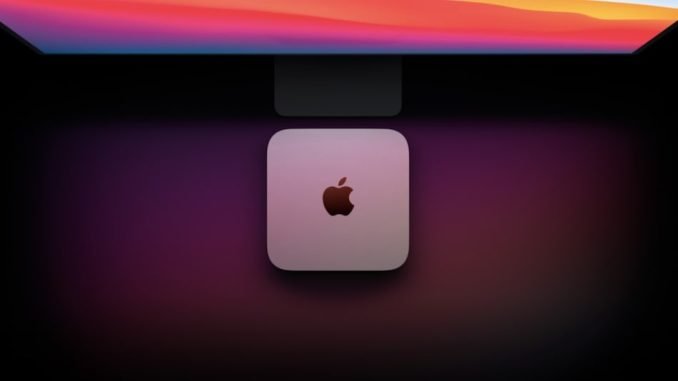

Mac mini with a high-end ‘M1X’ chip is launching in the “next several months” to replace the existing Intel-powered model, according to a report. The new offering could sit alongside the Mac mini that Apple launched last year with its M1 processor. In addition to the new Mac mini, Apple is said to have tested its in-display Touch ID fingerprint sensor for the iPhone 13 models, but they are reportedly not coming with the new technology. Separately, the Cupertino-based company is reported to have the iPad 9 in plans and the launch could take place as early as next month.
Bloomberg reporter Mark Gurman said in the latest edition of his weekly newsletter Power On that Apple would replace its Intel-powered Mac mini with a new model carrying the M1X chip. It is said to have an updated design and more ports than the current model.
Gurman previously reported that the new Mac mini model is expected to have four ports over the two available on the existing low-end version. It is said to be in development with codename “J374”.
The M1X chip itself is speculated to come with more power than the original M1 processor that Apple unveiled last year and offered on its current-generation of MacBook Air and MacBook Pro — in addition to the Mac mini.
Apple is likely to retain the same generation of the CPU cores on the M1X chip as with the M1 processor, but the suffix ‘X’ suggests that there could be more CPU and GPU cores to deliver a better performance. This could be similar to how the company previously offered X-series processors on its iPad models. Moreover, the M1X chip is speculated to power the next-generation MacBook Pro 14- and 16-inch models — besides the Mac mini.
In addition to the new Mac mini, Gurman said that while Apple had tested in-display Touch ID for its iPhone 13, it would not feature on this year’s models.
“I believe Apple is all-in on Face ID for its higher-end iPhones and its long-term goal is to implement Face ID in the display itself (like Samsung has added an in-display camera to its new Fold),” he wrote.
Gurman added that the company has two ways to go about Face ID and Touch ID implementations in the future. One would be to offer in-display Face ID on the top-end iPhone models, while continuing to offer regular facial recognition with a notch design on the low-end options. The second way for Apple is to provide in-display Face ID on the high-end models and in-display Touch ID on the low-end ones.
In both cases, it seems clear that Apple would continue to use Face ID as its biometric solution — alongside evaluating Touch ID.
Gurman also mentioned that Apple is not likely to bring its new AirPods Pro until 2022, though the regular AirPods are expected to receive a refresh with a design similar to the Pro model and a new case later this year.
“For the AirPods Pro next year, Apple has been testing a new design with an even shorter stem or no stem at all, plus new motion sensors for fitness tracking,” he said.
[“source=indiatoday”]
